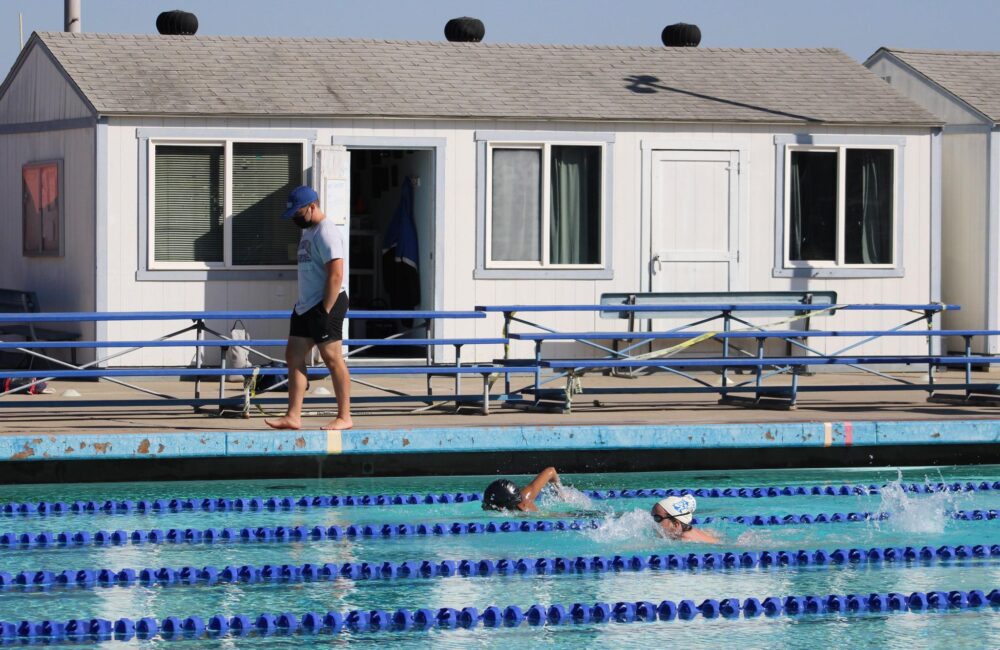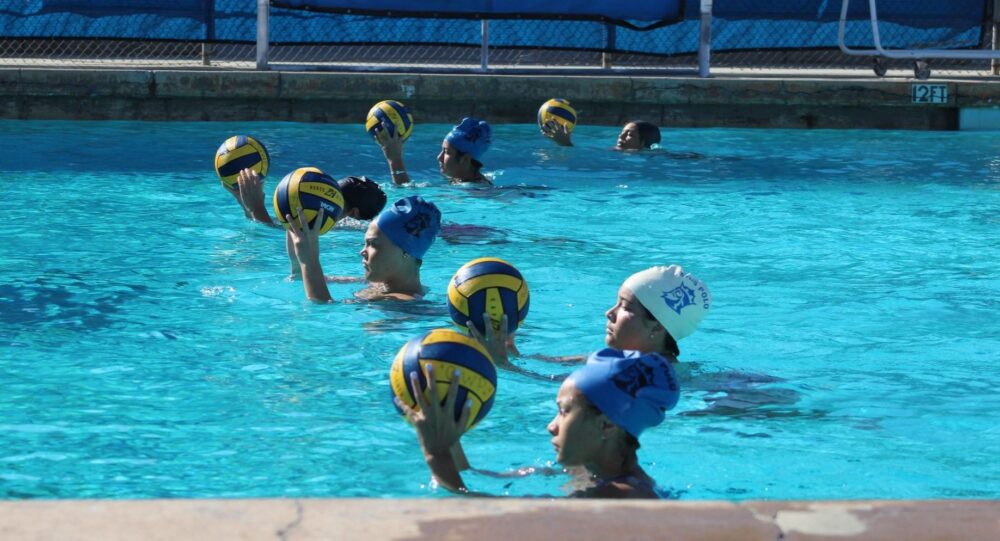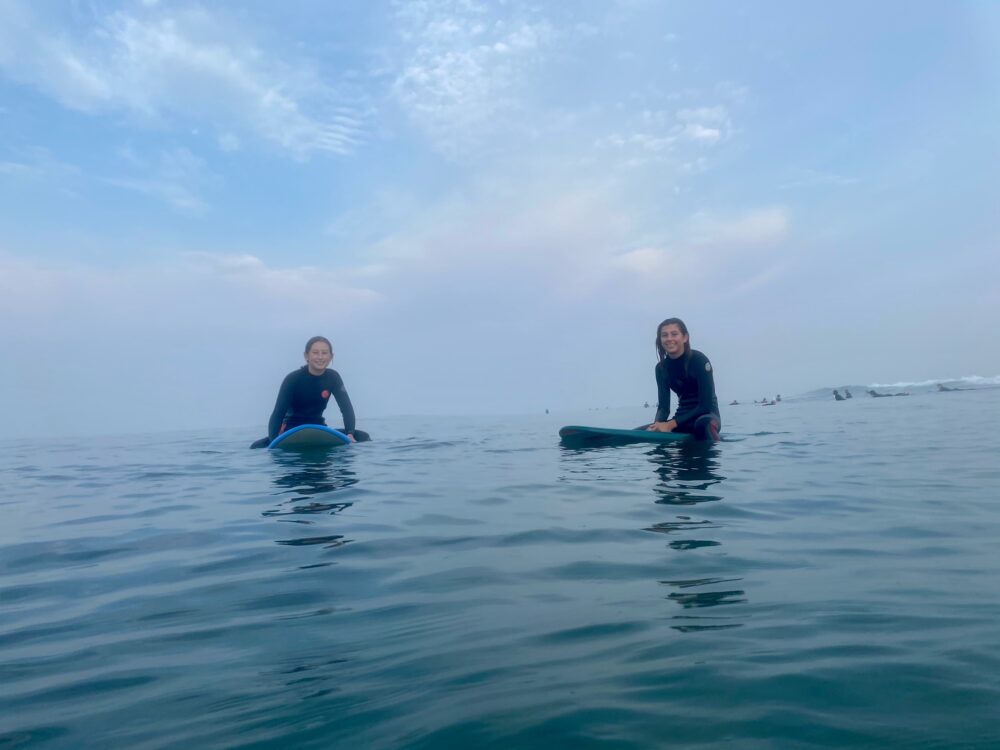
By Lylyan Yenson
COVID-19 has impacted Fountain Valley High School’s (FVHS) sports teams in many ways. The Huntington Beach Union School District (HBUHSD) has allowed sports to start practicing on campus, but is enforcing guidelines to keep players socially distant and avoid the spread of COVID-19.
“We were allowed to [hold practices on campus] by all the health departments and everything,” Athletics Director Roger Holmes said.
Holmes explained that over the summer all coaches were trained on proper protocols to allow practice, and that at the beginning of the year FVHS enforced the guidelines associated with Phase 1, the first and most restrictive of three phases designed to gradually permit a return to normal athletics. On Oct. 26, FVHS sports programs transitioned to Phase 2.
Phase 1 required athletes to be in groups of 10 or fewer outdoors with no physical contact or shared equipment. Phase 2 allows one group of 10 athletes to be indoors and to share equipment. Certain sports will have limited shared equipment or modified practice depending on level of risk: high, moderate, or low. Phase 3 would allow up to 50 athletes to be both indoors and outdoors with a three to six feet distance. All sports, excluding high risk sports that continue modified practice, are able to resume normal practice in phase 3. More information is available on the FVHS athletics page under guidelines.
The California Interscholastic-Federation (CIF) Southern Section released an updated calendar for sports to compete. CIF combined three seasons, fall, winter and spring, into two seasons, fall and spring.
Working through regulations and guidelines, fall sports, new and old, have continued practice and training.
Cross Country
“COVID-19 has been really tough on the athletes,” Boys’ Cross Country Coach Steven Knowles said. “Cross Country runners are very social and we truly are like a family. In many ways Covid-19 has separated our team or family.”
Separating into pods was an adjustment, said Knowles, since the team used to run together as one group for certain workouts. Knowles also said that some athletes have been running on their own due to parental restrictions.
“The team was bummed to be separated, but relieved now that they can be together somewhat. I know that they feel like they are behind on their progress to reaching their goal of being league champions,” Knowles said.
It is still unclear how competitions will work, as the restrictions depend on which phase the HBUHSD is implementing. The number of runners may be limited or runners may have to be transported to the race at various times depending on their levels.
“All schools have to deal with the COVID restrictions, so we just need to do our best and train according to the guidelines,” said Girls’ Cross Country Coach Brian Bivens.
Football
“Time off creates a lot of anticipation and excitement and so even though there’s a lot of rules and procedures that we have to follow we’re excited to be out there and excited just to see one another again. It’s been nothing but enthusiasm I think from our team,” Football Coach Chris Anderson said.
COVID-19 impacted football in many ways, as traditional football involves 22 athletes on the field and interaction between players. Phase 1 prohibited athletes from sharing equipment even within pods of 10, meaning for the first months of practice football players couldn’t pass the ball to one another. The athletes switched to primarily agility work and strength based training, rather than practicing based on positions like defensive linemen, offensive linemen, quarterback etc.
“There have been lots of changes [and] if you were to go out there you wouldn’t necessarily know it’s a football practice, but it is nice to be out there with the boys,” Anderson said.
The team looks forward to using this time to improve as a team despite restrictive rules, Anderson added. He explained that being away from each other has built anticipation and excitement from the team and that they’ve been nothing but optimistic.
“[Barons should look forward to] a driven group, a group that’s hungry to prove themselves on the field,” Anderson said. “You know we’ve got a lot of new guys coming up, and [we’re] just really excited to get the student body involved, whatever that may look like at the time.”
Water Polo

“I’m hoping and looking forward to a season, as long as we can do that safely,” Water Polo Coach Kyle Adama said. “But past that, I think there’s a good grouping of seniors on both teams so being able to have them play their last season and enjoy the sport together would be best.”
“There’s going to be a few days where they’ll be playing on the same day which is unusual for our sport,” Adama explained. Adama compared practice schedules to a puzzle, as both seasons for boys and girls have been mixed together. Usually the boys’ season is in the fall and the girls’ in winter. With both teams practicing at once, Adama said sharing pools and game days was a new challenge.
“I think with the group of kids we have for both water polo teams they’re very understanding and optimistic and they’re really ready to go start to play. So I’m hoping that things turn for the best and they get to have their season that they deserve,” Adama said.
Competitive Cheer
“[COVID-19] has definitely changed sports this year so drastically, and I think it’s up to many of us to adapt… so [athletes and students] feel like they have a little bit of [their sports] instead of [them] just being totally gone,” Pep Squad Coach Tara Bearden said.
Bearden explained the difficulty in practices where athletes had to maintain a distance and couldn’t share equipment. For cheerleaders, she explained, this didn’t allow them to tumble or stunt as they normally would. Practice has been maintaining their strength for when they are allowed to, Bearden said.
“They’re so excited to be in person and be around each other and feeling normal, but they’re still just sad they can’t stunt cause they know they won’t get a competition season if that doesn’t change,” states Bearden.
Bearden explains that cheer circuits have set up their own guidelines with three tiers: one with two parents for each cheerleader, one with only judges, and one virtual. Competition and football season, voices Bearden, is what she is mainly hoping for as cheerleaders would be able to go out and cheer for the school and team.
“It’s an unfortunate situation and we’re trying to make you know lemonades out of lemon,” says Bearden.
Surf

“Surf has been quite fortunate to have had very few changes,” Surf Coach Lisa Battig said.
Battig explaned that surf is a low risk sport that allows a large amount of distance between each surfer, as carrying a surfboard forces distance between athletes. Because surfing is a part of their normal in the midst of quarantine, Battig explains that practice has helped build teamwork and increase team camaraderie.
“I’ll just say one more time that I’m grateful for surf being considered a ‘low risk’ sport and that our students have been able to get in the water for practice,” Battig said. Battig explained that the team has matured as many athletes have been on the team for two years and for the first time since she has started coaching, the girls have a full roster with nine surfers..
“We are so proud of all of our FV Athletes and Coaches and how much they do to make a positive impact for our school,” Battig said.





